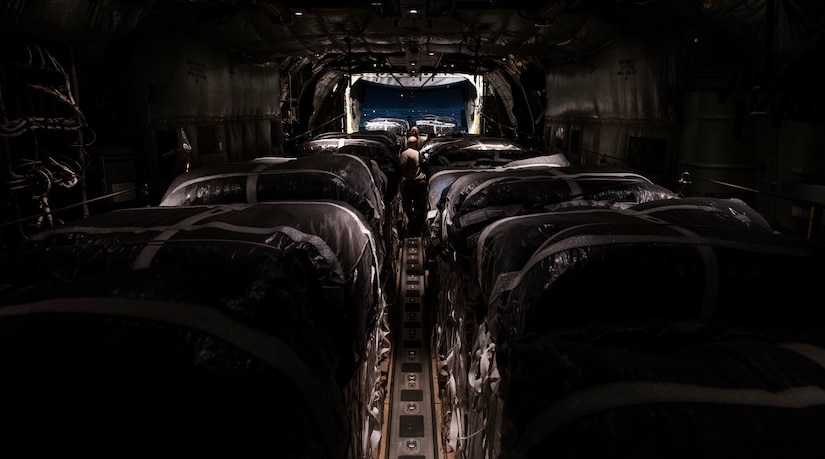By Air Force Capt. Chelsi Johnson, 455th Air Expeditionary
Wing
BAGRAM AIRFIELD, Afghanistan -- mlying over the mountainous
terrain of Afghanistan, two C-130J Hercules aircraft airdropped more than 30
container delivery system bundles to troops serving in a Resolute Support
Mission expeditionary advisory package, May 4.
Unlike previous combat airdrop missions, this dual-formation
airdrop was executed by two geographically separated units: the 774th
Expeditionary Airlift Squadron, an active-duty squadron located at Bagram
Airfield, Afghanistan, and the 746th Expeditionary Airlift Squadron, an Air
Force Reserve squadron located at Al Udeid Air Base, Qatar.
"The uniqueness about this mission is that it’s two
separate units, stationed in two separate countries, coming together for a
single airdrop, which to my knowledge has never been done before in combat in
this country,” said Air Force Lt. Col. Bret Echard, commander of the 774th
Expeditionary Airlift Squadron.
Complicated Planning
Echard pointed out that mission planning for a combat
dual-formation airdrop, in hostile territory, isn’t easy when a unit is
together, let alone when the second aircraft comes from a geographically
separated unit.
"For any large or small operation, especially in a
mountainous terrain environment like Afghanistan, communication is key and must
start at the basic level of planning,” Echard said. "It has to start early
and it has to be often because the smallest contingencies that pop up, and they
will pop up in Afghanistan, require a solid plan from the get-go, which starts
with a basic level of communication.”
The squadrons trained together for this type of mission
while participating in Green Flag Little Rock, an Air Mobility Command exercise
held last October at Little Rock Air Force Base, Arkansas.
"It’s very unique to build a relationship … in a
controlled training environment back home and then bring those capabilities to
the warfighter out here and actually execute the mission together,” Echard
said. "Those relationships, which are key to anything we do over here,
were built months ago and now we are lucky enough to execute them in combat.”
The units’ mission included providing logistical support to
a Resolute Support Mission expeditionary advisory package.
"[The] C-130s delivered enough supplies to sustain the
ground forces supporting the Expeditionary Advisory Package for another week,”
Echard said. "[This was] a tactical mission that impacts the bigger plan,
at the strategic level in this country.”
Expeditionary advisory packages provide tailored support to
regional Afghan commands for both enduring and emergent capability gaps.
"Our role in that is to sustain them [expeditionary
advisory package troops],” Echard said. "To airlift whatever the ground
forces commander requires for mission success and deliver those requirements
anywhere in Afghanistan.”
‘Fantastic Mission’
This work is why Air Force Col. Jennie Johnson, deputy
director of mobility forces and a 746th Expeditionary Airlift Squadron C-130J
Hercules pilot, puts on a uniform every day.
"Being able to help the advisors who are training the
Afghans so they can secure their own country is a huge win for our airmen,”
Johnson said. "This is a fantastic mission to be able to support and
they’re thrilled to be here and doing it.”
Established in 2015, the Resolute Support Mission is a
NATO-led, non-combat mission to train, advise and assist Afghan forces, who
assumed nationwide responsibility for Afghanistan’s security following the
conclusion of the NATO-led International Security Assistance Force mission. Its
purpose is to help Afghan forces and institutions develop the capacity to
defend Afghanistan and protect its citizens in a sustainable manner.







No comments:
Post a Comment